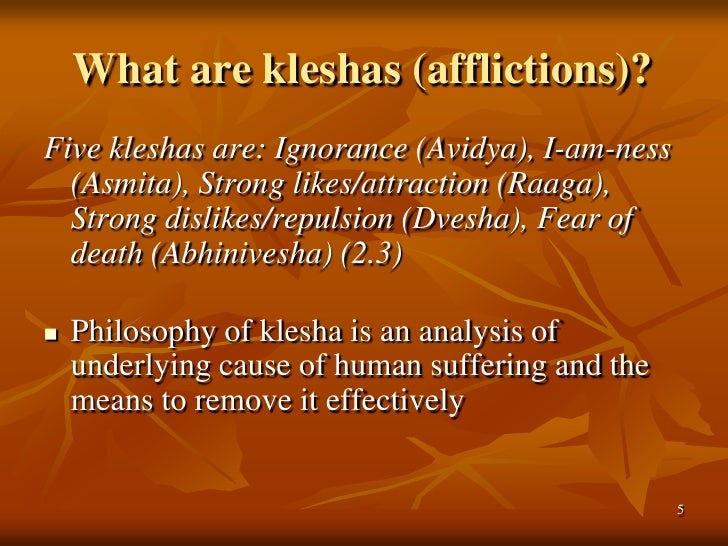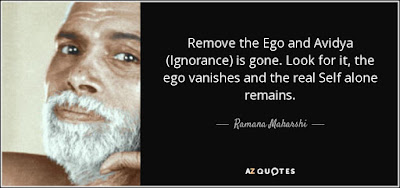
(References in brackets follow)
-
– US National Library of Medicine – National Institutes of Health [1].
The number of studies using dietary quality indices to compare restrictive diets with omnivorous diets is limited. One study reports the use of an Alternate Healthy Eating Index (AHEI) to examine the nutritional adequacy and quality of a low-fat vegan diet compared to a more conventional diet in type 2 diabetes patients. Patients switching to the low fat vegan diet significantly improved their AHEI score in every food category with a substantial increase for the fruit and vegetable components. Patients switching to the conventional diabetes diets did not improve their AHEI score. The increase for the AHEI score was accompanied with a significant improvement of intake of several nutrients. Moreover, this study reported that the mean vitamin B-12 intake of the low fat vegan diet remained within the recommended range even without supplement use. This was likely due to the inclusion of several vitamin B-12 fortified foods in the diet.
The aim of the present study was to analyze and compare the nutrient intake and the diet quality of vegans, vegetarians, semi-vegetarians, pesco-vegetarians and omnivorous subjects at least 20 years old.
In conclusion, results concerning body weight, nutritional intake, nutritional quality and quantity are in line with the literature on restricted and prudent diets versus unrestricted omnivorous diets. The use of indexing systems, estimating the overall diet quality based on different aspects of healthful dietary models (be it the US Dietary Guidelines for Americans or the compliance to the Mediterranean Diet) indicated consistently the vegan diet as the most healthy one. Adaptation with specific components (e.g., soy drinks instead of milk; inclusion of other polyunsaturated fat sources instead of fish) may increase the relation with different types of healthful diets, and this especially for the MDS (Mediterranean Diet Score) system.
-
– Health effects of vegan diets. Craig WJ [2)
Compared with other vegetarian diets, vegan diets tend to contain less saturated fat and cholesterol and more dietary fiber. Vegans tend to be thinner, have lower serum cholesterol, and lower blood pressure, reducing their risk of heart disease. However, eliminating all animal products from the diet may increase the risk of certain nutritional deficiencies. Micronutrients of special concern for the vegan include vitamins B-12 and D, calcium, and long-chain n-3 (omega-3) fatty acids. Unless vegans regularly consume foods that are fortified with these nutrients, appropriate supplements should be consumed. In some cases, iron and zinc status of vegans may also be of concern because of the limited bioavailability of these minerals.
-
– Diet and body mass index (BMI) in meat-eaters, fish-eaters, vegetarians and vegans [3].
Age-adjusted mean BMI was significantly different between the four diet groups, being highest in the meat-eaters (24.41 in men, 23.52 in women) and lowest in the vegans (22.49 in men, 21.98 in women). Fish-eaters and vegetarians had similar, intermediate mean BMI. Differences in lifestyle factors including smoking, physical activity and education level accounted for less than 5% of the difference in mean age-adjusted BMI between meat-eaters and vegans, whereas differences in macronutrient intake accounted for about half of the difference.
Conclusions: Fish-eaters, vegetarians and especially vegans had lower BMI than meat-eaters. High protein and low fiber intakes were the factors most strongly associated with increasing BMI.
-
– Nutritional Update for Physicians: Plant-Based Diets [4].
Physicians looking for cost-effective interventions to improve health outcomes are becoming more involved in helping their patients adopt healthier lifestyles. Healthy eating may be best achieved with a plant-based diet, which we define as a regimen that encourages whole, plant-based foods and discourages meats, dairy products, and eggs as well as all refined and processed foods. We present a case study as an example of the potential health benefits of such a diet. Research shows that plant-based diets are cost-effective, low-risk interventions that may lower body mass index, blood pressure, HbA1C, and cholesterol levels.
Conclusion: A healthy, plant-based diet requires planning, reading labels, and discipline. The recommendations for patients who want to follow a plant-based diet may include eating a variety of fruits and vegetables that may include beans, legumes, seeds, nuts, and whole grains and avoiding or limiting animal products, added fats, oils, and refined, processed carbohydrates. Among the major benefits for patients who decide to start a plant-based diet are the possibilities of reducing the number of medications they take to treat a variety of chronic conditions, lower body weight, decreased risk of cancer, and a reduction in their risk of death from ischemic heart disease.
-
– The Health Advantage of a Vegan Diet: Exploring the Gut Microbiota Connection [5].
Few studies include vegan subjects as a distinct experimental group, yet when vegan diets are directly compared to vegetarian and omnivorous diets, a pattern of protective health benefits emerges. The relationship between diet and the intestinal microbial profile appears to follow a continuum, with vegans displaying a gut microbiota most distinct from that of omnivores, but not always significantly different from that of vegetarians. The vegan gut profile appears to be unique in several characteristics, including a reduced abundance of pathobionts and a greater abundance of protective species. Reduced levels of inflammation may be the key feature linking the vegan gut microbiota with protective health effects.
-
– A vegan regimen with reduced medication in the treatment of hypertension [6].
Twenty-nine patients who had suffered from essential hypertension for an average of 8 years, all receiving long-term medication for hypertension, were subject to therapy with vegan food for 1 year. In almost all cases medication was withdrawn or drastically reduced. There was a significant decrease in systolic and diastolic blood pressure. A number of reported symptoms disappeared. There was a significant improvement in a number of clinical variables as well as a significant change in various biochemical indices such as urea, haptoglobin, cholesterol and triglyceride concentrations in blood. Subjectively all patients reported improvement. Selected patients, with a fear of side-effects of medication, who are interested in alternative healthcare might replace conventional medication with this dietary regimen.
-
– Vegan regimen with reduced medication in the treatment of bronchial asthma [7].
Thirty-five patients who had suffered from bronchial asthma for an average of 12 yr, all receiving long-term medication, 20 including cortisone, were subject to therapy with vegan food for 1 yr. In almost all cases, medication was withdrawn or drastically reduced. There was a significant decrease in asthma symptoms. Twenty-four patients (69%) fulfilled the treatment. Of these, 71% reported improvement at 4 months and 92% at 1 yr. There was a significant improvement in a number of clinical variables; for example, vital capacity, forced expiratory volume at one sec and physical working capacity, as well as a significant change in various biochemical indices as haptoglobin, IgM, IgE, cholesterol, and triglycerides in blood. Selected patients, with a fear of side-effects of medication, who are interested in alternative health care, might get well and replace conventional medication with this regimen.
-
– A Worksite Vegan Nutrition Program Is Well-Accepted and Improves Health-Related Quality of Life and Work Productivity [8].
The aim of this study was to determine the acceptability of a worksite vegan nutrition program and its effects on health-related quality of life and work productivity. The vegan group reported improvements in general health, physical functioning, mental health, vitality, and overall diet satisfaction compared with the control group. The vegan group reported a 40-46% decrease in health-related productivity impairments at work and in regular daily activities.Conclusions – A worksite vegan nutrition program is well-accepted and can be implemented by employers to improve the health, quality of life, and work productivity of employees.
-
– Dr. T. Colin Campbell (professor emeritus of nutritional sciences at Cornell University and co-author of "The China Study").
T. Colin Campbell, who argues that a vegan diet is healthier than diets that include meat and dairy products, is professor emeritus of nutritional sciences at Cornell University and co-author of "The China Study."
“Yes: Cut Animal-Based Protein” says Dr. Campbell: “Our findings, published in top peer-reviewed journals, pointed away from meat and milk as the building blocks of a healthy diet, and toward whole, plant-based foods with little or no added oil, sugar or salt.
“Historically, the primary health value of meat and dairy has been attributed to their generous supply of protein. But therein lay a Trojan horse.
“More than 70 years ago, for example, casein (the main protein of cow's milk) was shown in experimental animal studies to substantially increase cholesterol and early heart disease. Later human studies concurred. Casein, whose properties, it's important to note, are associated with other animal proteins in general, also was shown during the 1940s and 1950s to enhance cancer growth in experimental animal studies.
“In my lab, from the 1960s to the 1990s, we conducted a series of studies and published dozens of peer-reviewed papers demonstrating casein's remarkable ability to promote cancer growth in test animals when consumed in excess of protein needs, which is about 10% of total calories, as recommended by the National Research Council of the National Academy of Sciences more than 70 years ago.
“Some of the most compelling evidence of the effects of meat and dairy foods arises when we stop eating them. Increasing numbers of individuals resolve their pain (arthritic, migraine, cardiac) when they avoid dairy food. And switching to a whole-food, plant-based diet with little or no added salt, sugar and fat, produces astounding health benefits. This dietary lifestyle can prevent and even reverse 70% to 80% of existing, symptomatic disease, with an equivalent savings in health-care costs for those who comply.
“Based on the scientific evidence, and on the way I feel, I know beyond any doubt that I am better off for having changed my diet to whole and plant-based foods.”
References:
[1] – Turner-McGrievy G.M., Barnard N.D., Cohen J., Jenkins D.J., Gloede L., Green A.A. Changes in nutrient intake and dietary quality among participants following a low-fat vegan diet or a conventional diet for 22 weeks.
[2] – American Journal of clinical nutrition – May, 2009
[3] – International journal of obesity and related metabolic disorders: journal of the International Association for the Study of Obesity – June 2003
[4] – The Permanente Journal – Spring 2013
[5] – Nutrients Journal – 2014
[6] – British Journal of Nutrition – 1984
[7] – The Journal of Asthma – 1985
[8] – Annals of Nutrition and Metabolism – 2010
Rae Indigo is ERYT 500







